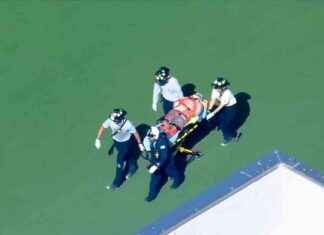Not all the artistic heritage that a city treasures can be seen in the halls of its museums. To get an idea of ??what it contains, for example, Barcelona, ??you also have to visit the houses of its collectors. Although it is not an easy task, because they are private spaces.
The Fundació Macba has resorted to an imaginative formula that allows access to this hidden art. It is not within the reach of all pockets, but the result of the initiative does revert to the general interest. La Vanguardia was able to join this itinerary through the Barcelona of secret art on Wednesday night, just as it did ten years ago.
More than 200 people who had paid 400 euros each followed a route through the houses of 37 local collectors who decided to join the proposal and open their doors. Each participant ate the first course of dinner in one house and the second in another. The party ended at midnight at Macba, after dessert and a few drinks.
The event raised 120,000 euros net (there were also sponsors involved). Part of this money has already been allocated by the Foundation to the acquisition of a work that will be deposited in the museum’s collection: Tunneling Machines, by the Madrid artist Teresa Solar, exhibited at the Venice Biennale.
7 p.m. on Wednesday. The president of the Fundació Macba, Ainhoa ??Grandes, welcomes people in the hall. She recalls the nature of the foundation: a private entity that mobilizes resources to support the museum and encourage collecting and patronage. The summoned explorers receive an envelope containing the hosts who will open their collections to them. A fleet of Mercedes will take care of taking them there.
The different groups are distributed throughout the city, especially in the upper part. They access the interior of those art galleries that are private but are usually in the orbit of museums such as the Macba. For example, in one of the houses there are some images of the artist María Teresa Hincapié that in a few months will be exhibited in the rooms of the contemporary art museum. It is common for these collectors to give their works to museums.
The explorers confirm first-hand the existence of a fascinating private art gallery with many locations. To the classics such as Casas, Picasso, Miró, Dalí or Tàpies are added names of contemporary authors that often resonate in auction houses.
Before the surprised gaze of the intruders appear works by Warhol, Plensa, Henry Moore, Anish Kapoor, Louise Bourgeois, Tracy Emin, Calder or Mona Hatoum. A hypnotic video installation by William Kentridge is exhibited in a house and the chronicler lives the unique experience of walking through the interior of a pavilion by the recently deceased Dan Graham, arranged in a garden. There is another one in the Reina Sofía in Madrid, but it doesn’t have as much magic.
One of the hosts gives some clues about the family process of creating the collections. Sometimes, if coexistence is optimal, it is possible to articulate a story that both members of the couple feel as their own. But when disagreements arrive, there is a risk that the disintegrating trend ends up generating three collections in one: that of each of the members of the couple plus a third made up of the pieces bought by consensus.
Another host quotes a phrase attributed to Freud to assess whether or not an art collection is alive: a collection in which nothing is left over or missing is a dead collection, he says.
The expedition of car 22 travels to complete dinner in the warm house that the architect Benedetta Tagliabue has in Ciutat Vella. The hostess will be her daughter, Caterina Miralles Tagliabue, also an architect. Her mother is held in Italy by a drivers’ strike.
The house has just come out in the Financial Times, in an article entitled The secret furniture of Enric Miralles. The curious thing about the headline is commented, since the house is not exactly secret: before the pandemic it often hosted meetings and parties.
The last stage is the return to the Macba hall for dessert. There, the director, Elvira Dyangani, takes the microphone to welcome Teresa Solar’s work, the first acquisition made with the money raised on this route entitled Exit Macba.
The last similar experience, inspired by New York, had taken place ten years ago, after two previous editions. In one of them, the museum used part of the collection to buy five films by Dan Graham himself.








